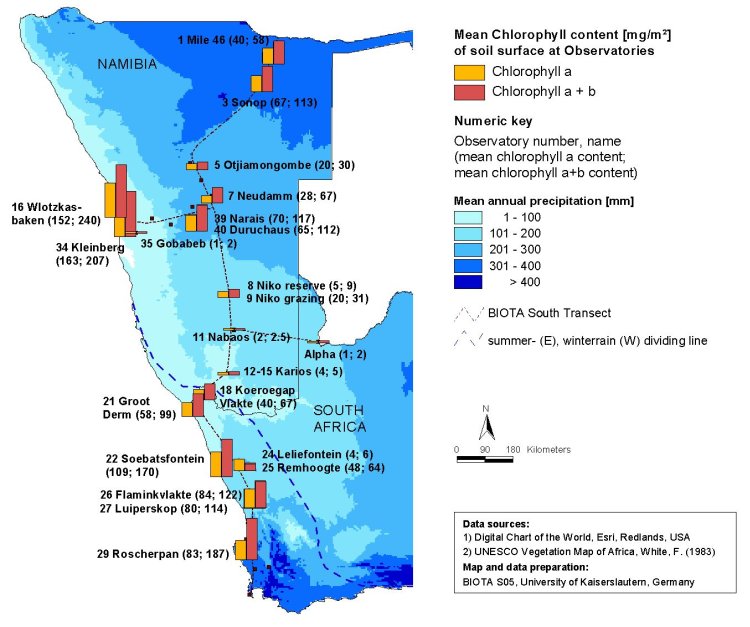Soil photosynthetic biomass (expressed as chlorophyll content) was significantly higher in the winter rainfall area than in the summer rainfall area. However, the amount of precipitation showed no relation to the BSC biomass or to the biodiversity of green algae and cyanobacteria. Nitrogen contents of the soil in both areas were comparably low. As many cyanobacteria fix atmospheric nitrogen, we expect a high influence of BSCs on the soil nitrogen pool. Analyses of grain size classes of BSC adjacent soils revealed that BSCs with higher biomass values grow on soils with a higher proportion of silt and clay (< 0,63 mm), whereas weak BSCs with lower biomass values occured on soils with a higher sand content (> 0,63 mm). |






 Go to the WeatherNet
Go to the WeatherNet

